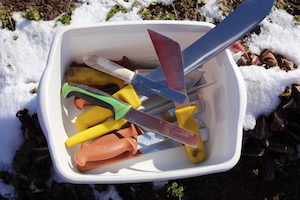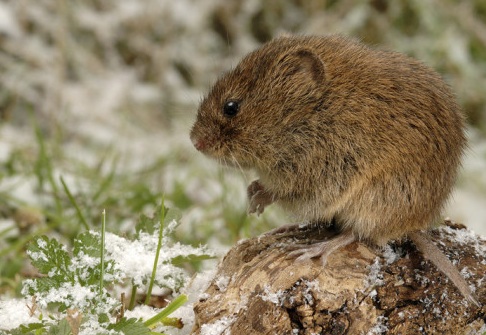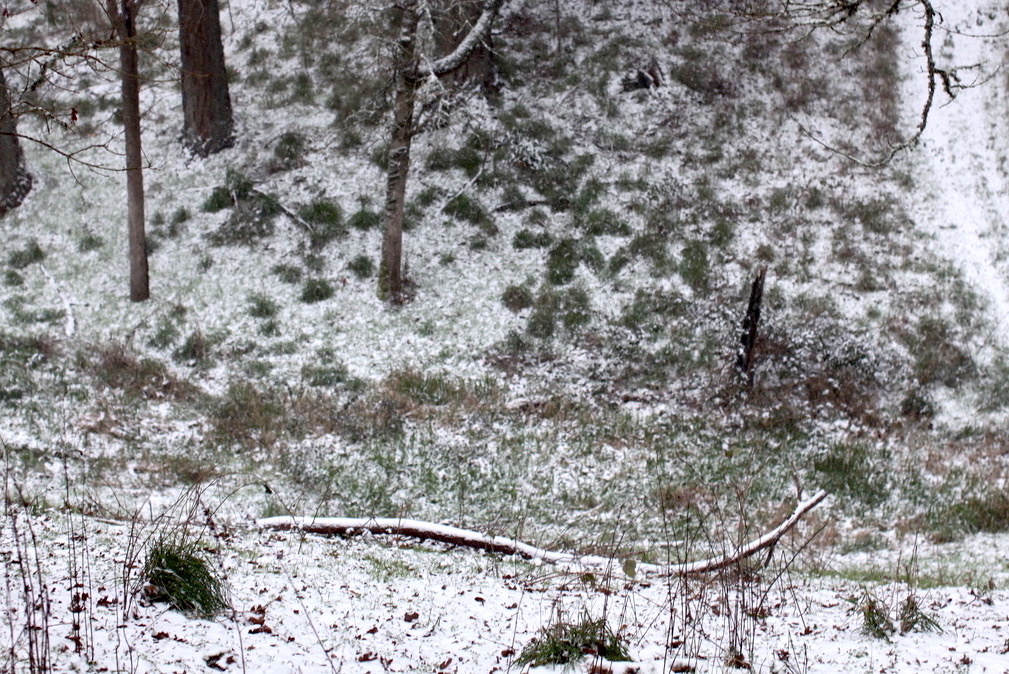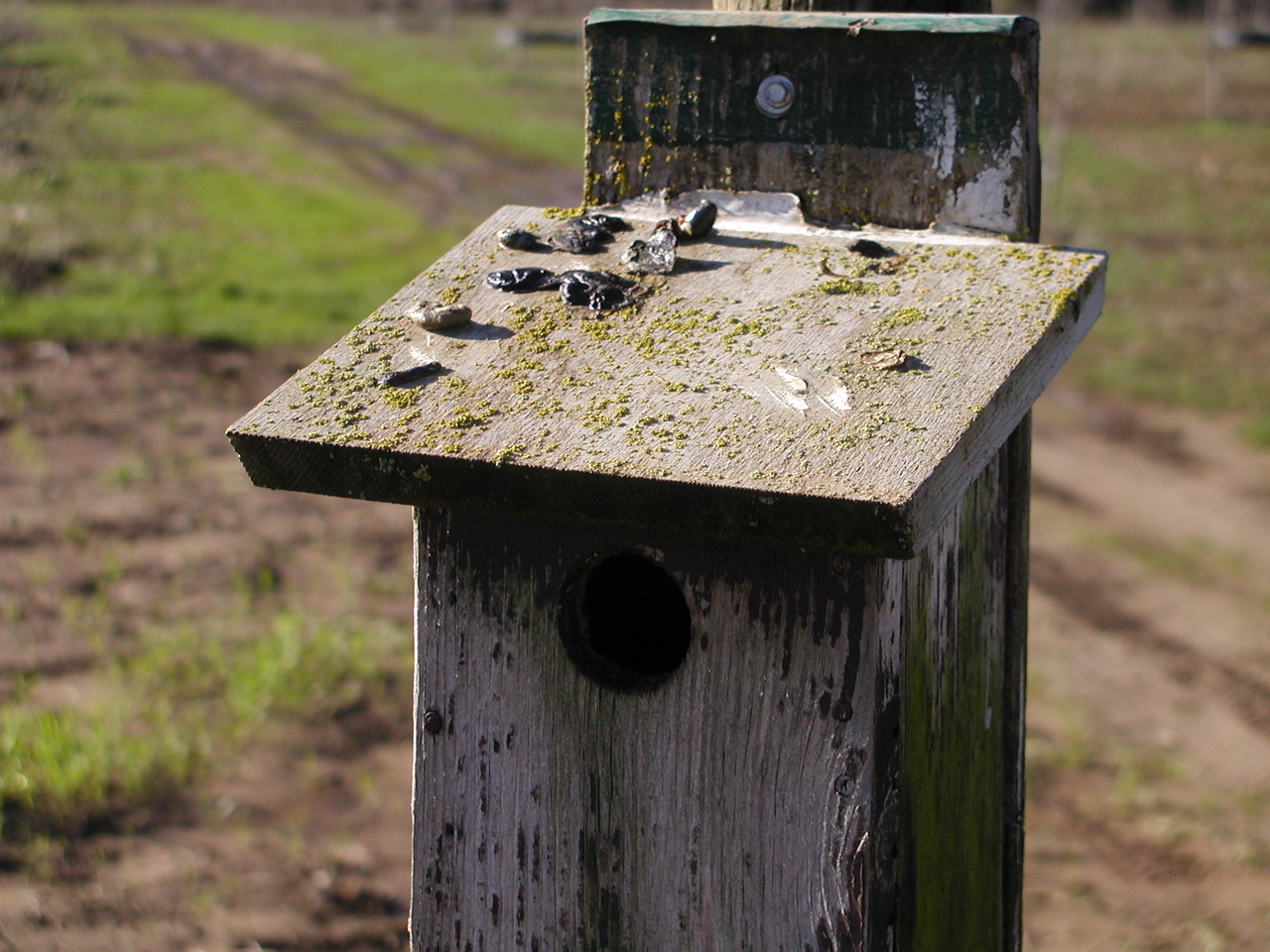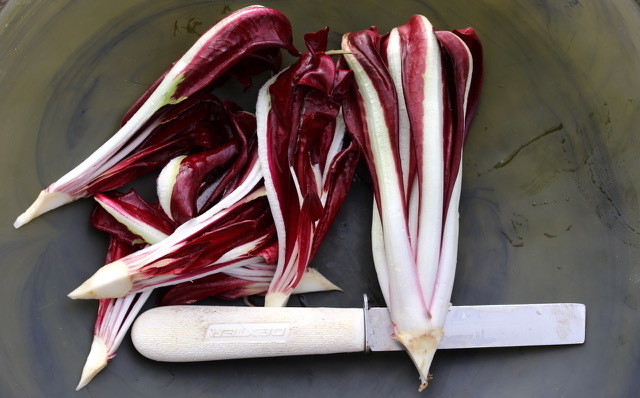
Farm Bulletin: Chicories Are Here!
A heads-up from contributor Anthony Boutard of Ayers Creek Farm:
We have started delivering the Arch Cape chicories to our restaurant accounts and some selected stores. These are Rubinette Produce on N.E. Sandy and New Seasons Market at Cedar Hills, Raleigh Hills and Grant Park. Those New Seasons stores are on the delivery route. When we see something special in the produce section, we communicate our pleasure to the staff. Chicories are a very small bit of their portfolio, and the Arch Cape just an atom. A complimentary remark helps catch their attention when it comes time to reorder. If you don’t see them, inquire.
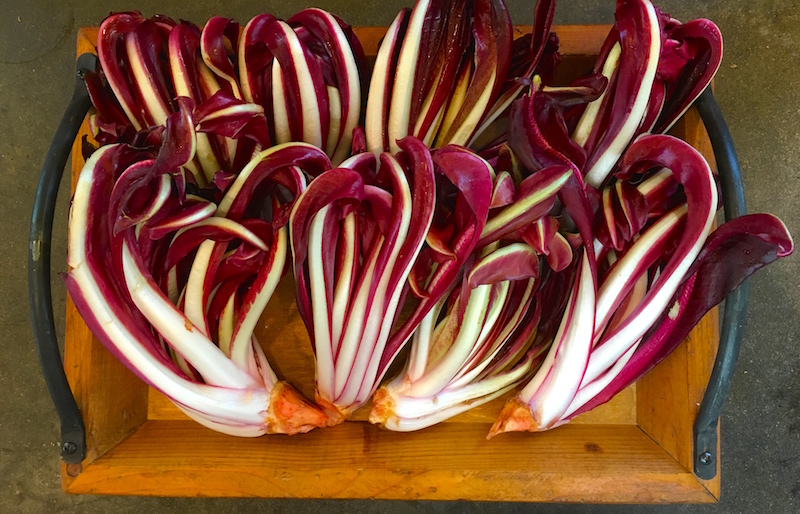
The chicories are heading up two weeks earlier than last year. The February full moon is 11 days earlier this year—February 8th versus February 19th last year—a likely factor. We enjoy the idea of the moon as the conductor our lives. In her gibbous state last night, she traveled the fair sky of the ecliptic with gentle light borrowed from the sun, extending the hunting hours of coyotes. Their exuberant choruses through the night played off against the amorous calls of the great horned owls. We are keeping an eye on their nest as the female will be settling down soon.
A couple years ago, we saw a post where these lovely heads were chopped cross-wise for a salad. It was jarring to the loving farmers' eyes, a shock and abomination that lingers to this day. These chicories should be taken up with our digits, i.e. our fingers, not a fork, and nibbled slowly, contemplatively down the blade. Savoring the sweet nub of the root before picking up another. It is a salad to linger over lovingly, not forked up in haste. To prepare them for this ritual, we cut from the tip of the root nub to the base of the leaf, and then tear them apart lengthwise in four or six pieces. In this manner, as shown above the elegance of the blade is retained, along with the sweet nub. They are best dressed lemon juice which, as a fruit juice, confers a measure of sweetness to the raiment.
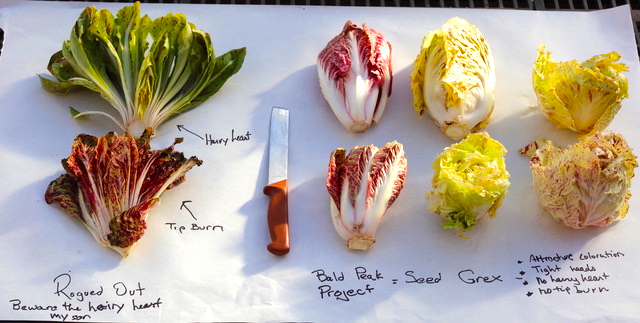 In 2017, we encountered a small cluster of chicories heading up January. It was clear that they were a genetic amalgam of the various sorts we had planted over the years, prompting us to start the "Bald Peak" project. We put them in pots so as to isolate them for pollination purposes, and harvested the seed that August. Last July we planted a row, and now we are selecting plants for our second seed harvest. We enjoyed walking the seed row with our friend Myrtha Zierock this week. Below are some examples of the heads we encountered. They were growing in the Arch Cape rows, and thus fair game for the harvest knife. The seed we harvest in August will ripen too late to resow. It will be planted in the July 2021 for harvest in January 2022. All this requires a schedule because we also breed to grow seed for the Arch Cape. In any given year, only one type of chicory can be grown for seed so as to avoid undesirable cross-pollination.
In 2017, we encountered a small cluster of chicories heading up January. It was clear that they were a genetic amalgam of the various sorts we had planted over the years, prompting us to start the "Bald Peak" project. We put them in pots so as to isolate them for pollination purposes, and harvested the seed that August. Last July we planted a row, and now we are selecting plants for our second seed harvest. We enjoyed walking the seed row with our friend Myrtha Zierock this week. Below are some examples of the heads we encountered. They were growing in the Arch Cape rows, and thus fair game for the harvest knife. The seed we harvest in August will ripen too late to resow. It will be planted in the July 2021 for harvest in January 2022. All this requires a schedule because we also breed to grow seed for the Arch Cape. In any given year, only one type of chicory can be grown for seed so as to avoid undesirable cross-pollination.
Why go to all this bother and expense? Most chicory seed is produced in Europe, and is well-adapted to the day-length and weather conditions on the continent. The varieties are highly localized. We were constantly disappointed by the quality of the crop when grown in Oregon. One year, the crop from a prominent and respected seed company only yielded 10% harvestable heads, the others were subpar, to put it politely. Other times, we had germination problems. Because the seed was adapted to areas with relatively dry winters, the plants did not have good rot resistance, leading to tip burn and bottom rot. Useful traits reside in the populations, but they need to be amplified by the rigors of our climate and selection. Farmers put up with enough grief; seed quality shouldn’t be heaped into the emotional equation. Consequently, we now manage and produce our own seed.

